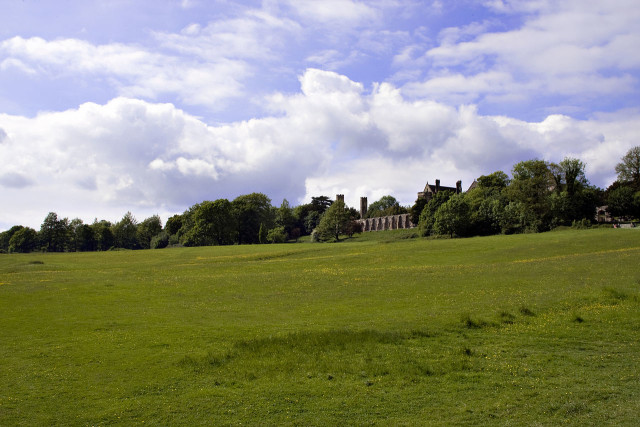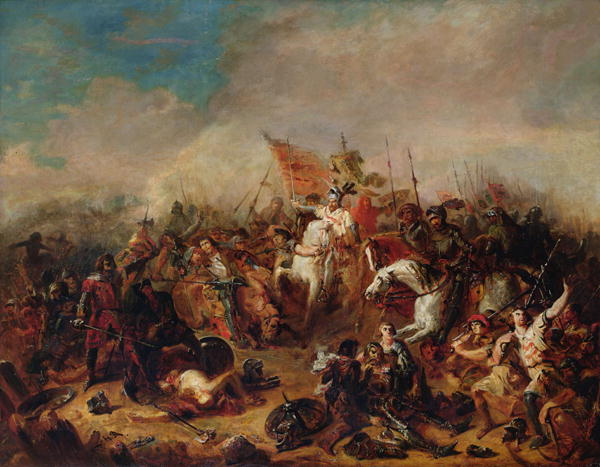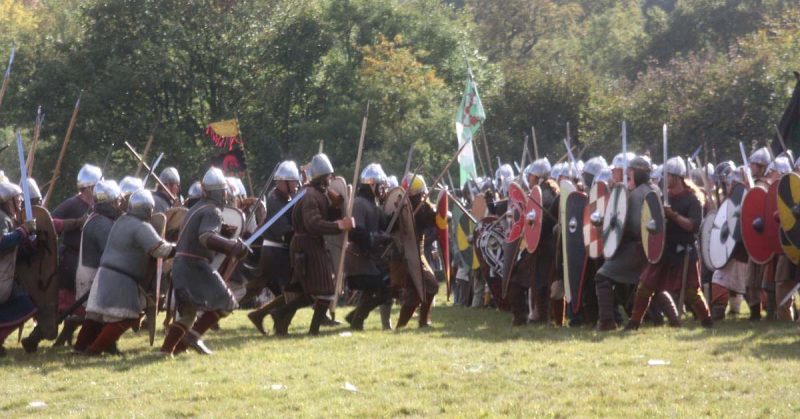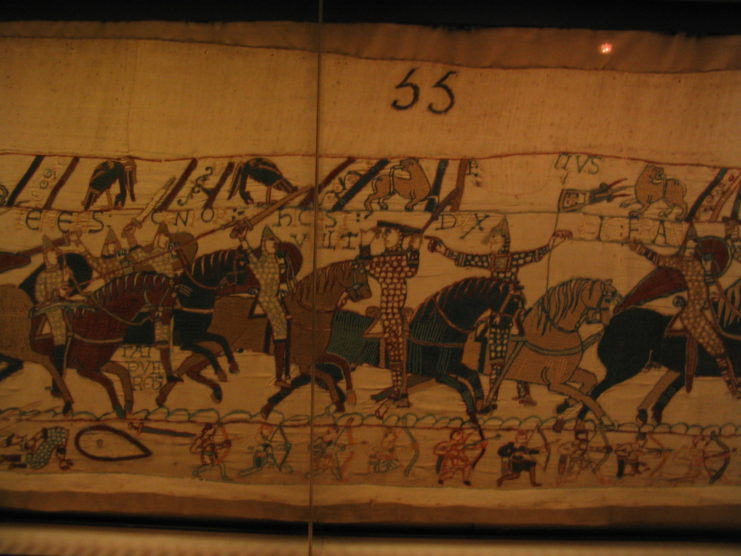Across a short, steep, grassy slope in the cold light of the bright October sun, two heavily armed bodies of men faced each other. They were evenly matched in numbers and skill, being each about ten thousand strong. The force at the top of the hill was entirely made up of men on foot.
They were equipped with broad shields, round, oval, or kite shaped, painted with many colours. Their helms were high and broad, pointed at the top like rounded cones. They stood by the king of England, Harold Godwinson, who had marched far and fast, fresh from their victory over Vikings in the North to face this invading army.
At the bottom of the hill was the army of William II, Duke of Normandy, claimant to the throne of England. This was a dark, chaotic and bloody time in the history of Britain. Harold had been king for only nine months, and a new king was obliged to defend his claim in person on the battlefield. William of Normandy had crossed the sea from France in haste with his host, seeking to overthrow the new king and take the throne by force.
William’s army was well equipped with cavalry, heavily armoured and battle hardened horsemen who were arrayed on the left and right wings of his army. The main strength of his force was of infantry, also arrayed in bright mail and carrying heavy shields, but at the front of these men stood a long line of archers with small, short bows. These men were for the most part not armoured, save for a bit of leather or a light helmet. They were fast moving, short ranged bowmen, and it was they who moved first up the slope.
It had rained heavily overnight, and the grass underfoot was still slippery and sodden. The trees on either side of the battlefield were almost bare, though some still displayed, the last of the autumn leaves.
All had been quiet for some time as the two armies faced off, but now the archers hurried came into range. A shout came from the English line, and there was a crash as they locked their shields into the shield wall that had long been the default tactic for the Anglo-Saxon armies of England. The bowmen loosened a volley of arrows up the hill, and as they did so the front of the Norman infantry began to move.
They were armed for the most part with long straight swords, and these they banged on their shields as they gathered speed. The archers loosened another volley, then another, but few arrows found an effective mark, bouncing harmlessly off mail or helmet, or thumpng into the heavy wood of the shield wall. They fell back a little as the infantry, now running at full speed, passed through their ranks and crashed with a deafening noise into the defenders at the top of the hill.
Harold’s men were armed with huge axes and short stabbing spears. Their shield wall held fast in the face of the onslaught, and as the front line fought hand to hand with the Normans, the men at the back-flung rocks and javelins at the attackers. The Normans pushed, and the English pushed back. Men fell on both sides, but the attacking Normans took more casualties.
Their cavalry moved in to support them, thundering up the hill into the wings of the defence, but to no avail. They fell back, charged and fell back again. The second time this happened both the infantry and cavalry retreated, and in a ragged line from left to right Duke William’s force began to retreat backdown the hill. The English line began to move in pursuit.

A detachment from the English left reached the bottom of the slope and engaged the rear of the fleeing Normans. Confusion and chaos grew, and the Norman line began to disintegrate, it seemed likely that the Anglo-Saxons would be victorious. Then the Duke of Normandy, pulled off his helmet to show his face, charged into the pursuing Anglo-Saxon infantry with his knights about him.
The retreating cavalry turned and rallied to him, and the Anglo-Saxons were beaten back. The Norman line reformed about the Duke. Harold held his men in check at the top of the hill. It was almost noon by the sun. The two armies faced each other again across the short slope, which was no longer green, but churned up into slick mud by the horses hooves, and littered with the bodies of the slain. Again, all was quiet.
William’s army was poorly placed, he knew. Attacking up the slope into the solid shield wall greatly reduced the effectiveness of his cavalry, and this would get worse. The slope would become more and more muddy and churned up with every attempt. Added to this, the Normans had nowhere to retreat to if the battle was lost, and no reinforcements to rely on in the coming days. They were not well supplied with food or water. The battle must be won quickly, if it was to be won at all, and victory would not be gained by sending his men up that bloody hill again and again.
His first attempt had nearly ended in disaster. But thinking on this during the lull in the early afternoon, William saw an opportunity. Harold’s troops had been eager to pursue his retreating army and had done so to their great loss in the morning. Could this be used to his advantage? He gave orders to his knights and footsoldiers and rode himself to the left of his army.

The cavalry charge came suddenly. From left and right great waves of horsemen charged up the hill. They met with fierce resistance at the top, and as before the force of their charge was greatly reduced by the slope. They fought, swirling against the shield wall, but they could not break through, and William, at the front of the battle, gave the order to withdraw. As before, the English pursued them down the hill, but this time, the whole length of the English line joined in the pursuit. The Norman infantry held their ground, and the battle was now joined on the flat ground at the bottom of the hill.
The cavalry, as William had intended, retreated until the English line was fiercely engaged with shield and battleaxe on the flat. Then they wheeled round, and on both the right and the left they flanked the English infantry. The pursuers broke and fled back up the hill. Arrows followed them, finding a mark now. The English line reformed at the top of the hill, but their strength was greatly reduced.
For the last time, Duke William ordered his men up the slope, but there would be no feigned retreat this time. Harold’s line was ragged, his men’s shields were cloven, their axes notched, their limbs heavy with the fear of their coming defeat. When the shield wall was raised the Norman infantry punched through at several points. Harold’s line was forced back. Harold himself, surrounded by a picked band of axemen, was overcome at last.
The cavalry gained the hill and held it. The once proud shield wall disintegrated into knots of men fighting desperately, back to back. One by one, they were all overcome. The battle was over, William was victorious, and two months later was crowned King of England in Westminster Abbey on Christmas Day. William’s victory changed the history of England and Europe.

